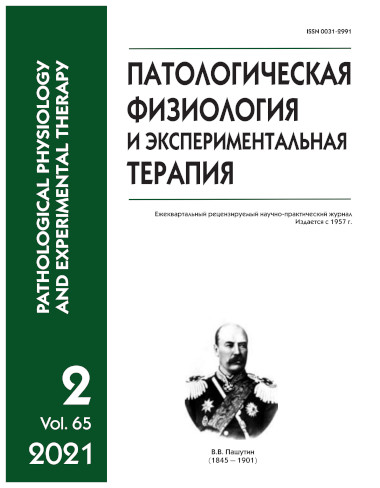Damage of erythrocytes and blood plasma macromolecules in patients with alcoholism and the membrane-protective effect of lithium salts
Abstract
Introduction. In alcoholism, red blood variables are altered, and oxidative stress, along with an increase in the oxidative modification of biomolecules products, occurs. These effects have stimulated the search for agents to protect red blood cells against the toxic effects of ethanol. Lithium salts may be promising in this regard, since lithium preparations are used as normothymics for treating affective spectrum disorders. The aim of this study was to investigate red blood indexes, factors of oxidative stress in patients with alcoholism and to assess the protective potential of the lithium salts, ascorbate, succinate, pyruvate, fumarate and carbonate, against the toxic effect of ethanol on red blood cells. Methods. Blood samples were collected from 59 alcoholic men and 38 healthy men. Hematological analysis was performed with a Micros 60 hematological analyzer. In plasma, oxidative damage of proteins was determined by the amount of carbonylated proteins (CP), and lipid peroxidation was determined by the amount of TBA-reactive substances (TBARS), as measured spectrophotometrically. The membrane-protective effect of lithium salts was evaluated in vitro by the degree of hemolysis of red blood cells treated with ethanol in the presence of lithium salts at a concentration of 1.2 mmol/l lithium ion. Results. In alcoholic patients, compared with normal patients, an increase in the mean corpuscular volume (MCV) and a decrease in all other red cell variables were found. Concentrations of CP and TBARS in plasma exceeded normal values. The lithium salts, fumarate, pyruvate, and ascorbate, elevated the resistance of red blood cells to ethanol-induced hemolysis by 1.5-1.7 times. Lithium carbonate had no effect. Conclusion. Significant damage to red blood cells and plasma macromolecules was found in alcoholic patients. Lithium fumarate, pyruvate and ascorbate had a large membrane-protective effect. Thus, these salts increased the resistance of red blood cells to the toxic effects of ethanol. These salts expand the arsenal of membrane-protective compounds, which in combination with the normothymic effect of lithium, will allow them to be used in developing drugs for treatment of affective spectrum disorders.






